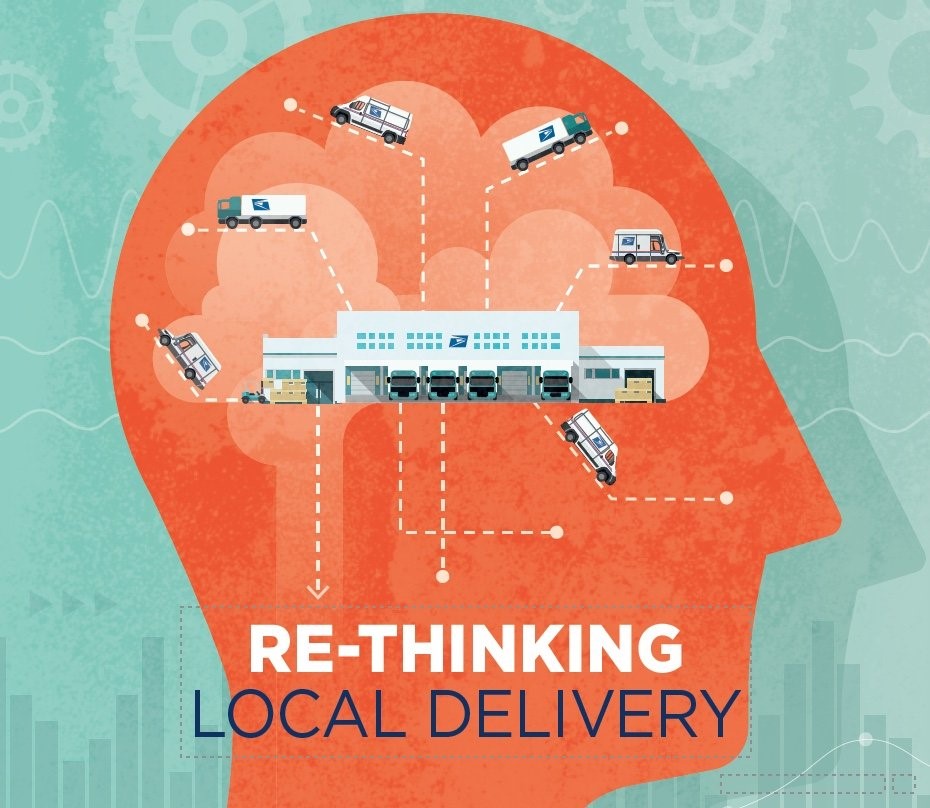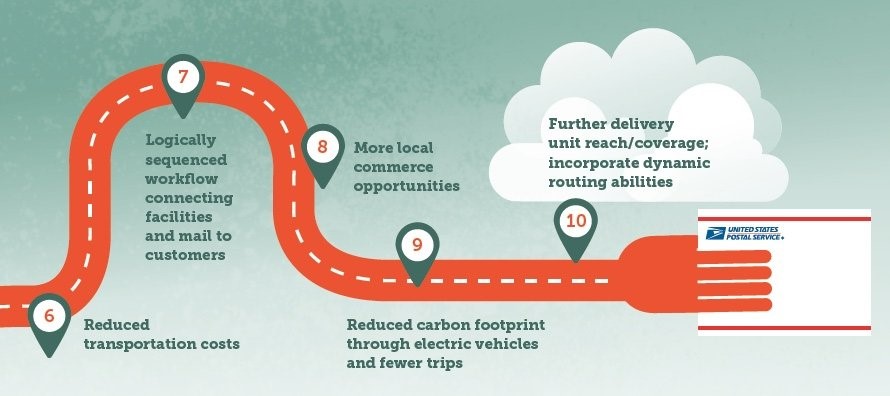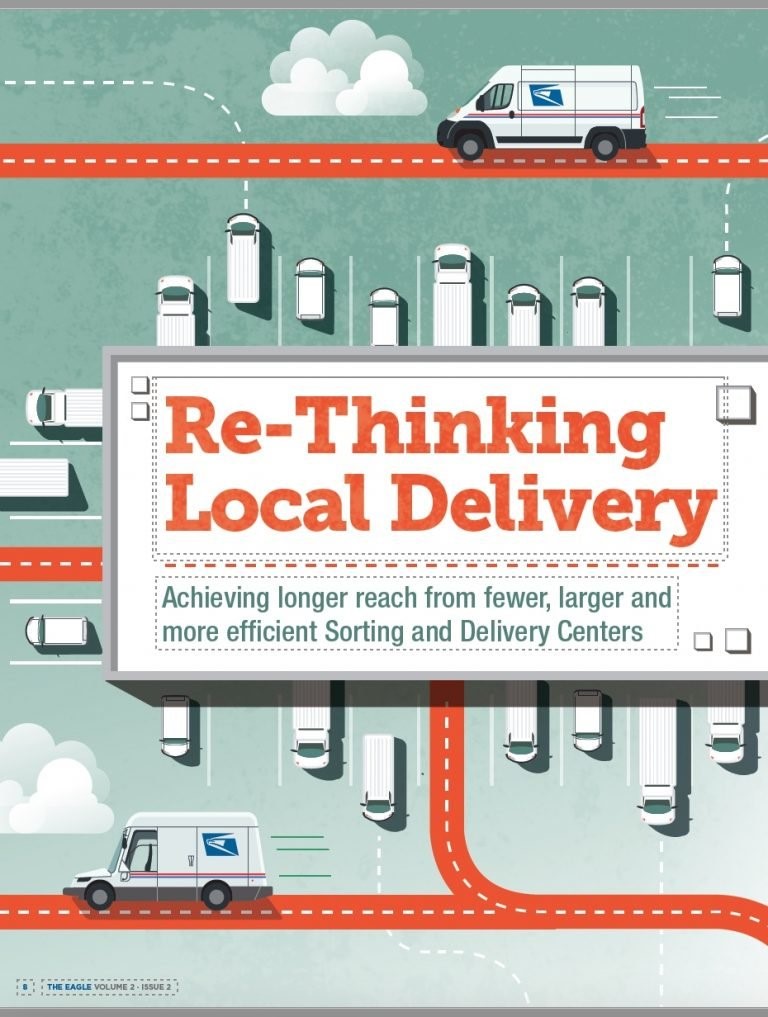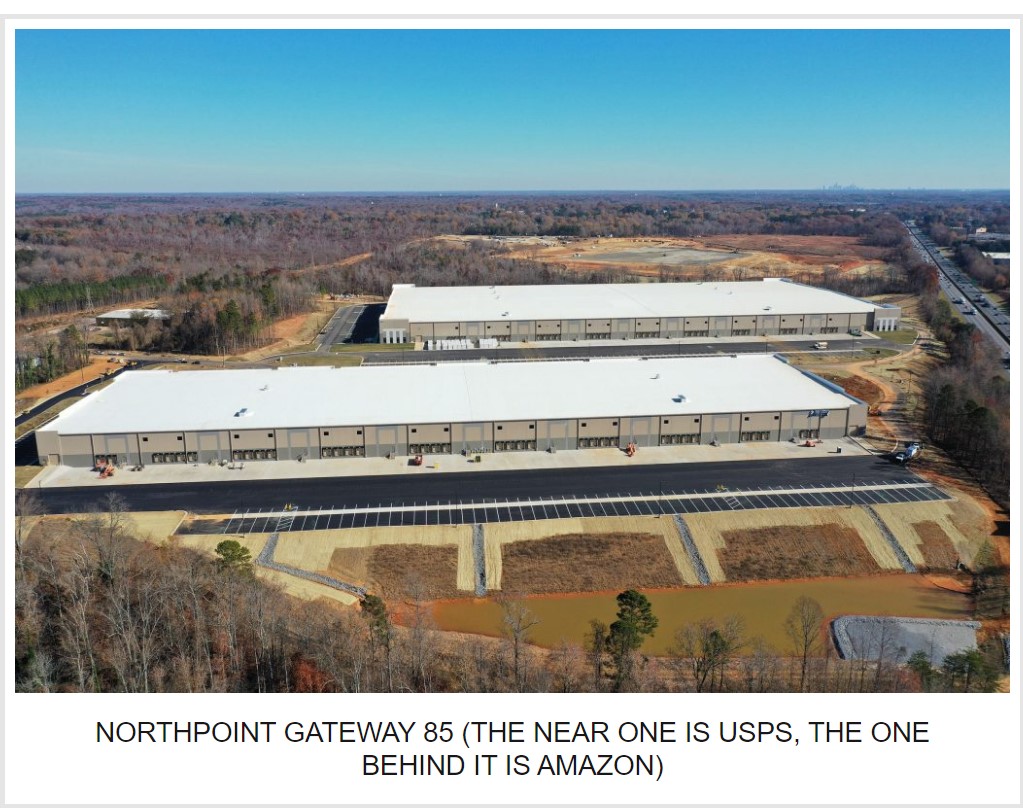The USPS Eagle spins S&DCs to postal employees, Save the Post Office, Steve Hutkins The cover story of the new issue of the Postal Service’s Eagle Magazine is “Re-Thinking Local Delivery.” It’s all about the big, new, modern Sorting and Delivery Centers that will replace carrier operations at your local post office. The article has a graphic showing a delivery vehicle out on a route making stops at the ten benefits of the new network: Larger, more efficient delivery unit design; Improved service performance and reliability; Ample space, docks, conveyors, mail and material handling equipment to operate more efficiently and provide greater reach; Improved employee workplace; Efficient, repeatable and measurable operations;
Topics:
run75441 considers the following as important: law, politics, Save The Post Office, Steve Hutkins, USPS
This could be interesting, too:
Robert Skidelsky writes Lord Skidelsky to ask His Majesty’s Government what is their policy with regard to the Ukraine war following the new policy of the government of the United States of America.
Joel Eissenberg writes No Invading Allies Act
Ken Melvin writes A Developed Taste
Bill Haskell writes The North American Automobile Industry Waits for Trump and the Gov. to Act
The USPS Eagle spins S&DCs to postal employees, Save the Post Office, Steve Hutkins
The cover story of the new issue of the Postal Service’s Eagle Magazine is “Re-Thinking Local Delivery.” It’s all about the big, new, modern Sorting and Delivery Centers that will replace carrier operations at your local post office.
The article has a graphic showing a delivery vehicle out on a route making stops at the ten benefits of the new network:
- Larger, more efficient delivery unit design;
- Improved service performance and reliability;
- Ample space, docks, conveyors, mail and material handling equipment to operate more efficiently and provide greater reach;
- Improved employee workplace;
- Efficient, repeatable and measurable operations;
- Reduced transportation costs;
- Logically sequenced workflow connecting facilities and mail to customers;
- More local commerce opportunities;
- Reduced carbon footprint through electric vehicles and fewer trips;
- Further delivery unit reach/coverage; incorporate dynamic routing abilities.
The Postal Service has yet to produce any data supporting these claims, and about the only data it has provided show that the plan, rather than reducing transportations costs, will drive them up by requiring more routes. Similar claims in the past about improving efficiencies and performance have not materialized, and much of this talk is just rhetoric disguising reality.
More “efficiency” usually means the Postal Service thinks accomplishing the same work is with fewer employees. It will look for workforce reductions, perhaps as many as 50,000 jobs. “Measurable operations” means that it will be easier for management to surveil employees at the S&DC than at the post office. And as for improving service performance and reliability — the rationale for relaxing service standards on First Class mail last year — that’s doublespeak for raising on-time scores by slowing down the mail and lowering the grading curve.
“The Postal Service’s current delivery unit model,” begins the Eagle article, “is the legacy of prolonged underinvestment in the organization’s infrastructure.” It describes carrier operations in the back of the post office — Destination Delivery Units, or DDUs — as “often attached to Post Offices, which restricted the Postal Service’s ability to operate efficiently and accommodate the growing volume of packages.”
Delivery units aren’t simply “attached” to post offices. They are one of the two core functions of a post office, and they usually occupy more than half the space. Many of the clerks in the post office do double duty by not only serving customers at the window but also helping with the carrier operation. This is how it’s been for over 150 years. Now the Postal Service wants to “decouple” delivery and retail operations so that it can operate more efficiently (with fewer employees) and to help deal with the growth of the package business — one of the main drivers behind the plan.
To help make its case, the Eagle denigrates post offices as “aging” and “ill equipped,” “inefficient,” long in need of upgrades, redundant (there are too many of them, and they’re too close together), and “poorly maintained and lacking amenities commonly found in the delivery operations of the Postal Service’s competitors.” The article doesn’t explain why. If post offices are so poorly maintained and ill equipped, the Postal Service hasn’t done more to improve conditions.
In contrast to this aging infrastructure of post offices, many S&DCs will be “new, modern, purpose-built facilities.” Many, perhaps, but the vast majority of the S&DCs will not be located in new, modern facilities. They’re being put in “aging” processing centers that weren’t designed or located to handle hundreds of carriers and delivery vehicles.
Another benefit of the S&DC network, says the Eagle, is that it will lead to “a more efficient physical footprint for a lower carbon footprint.” The S&DCs, it claims, will “be better able to accommodate greater use of electric vehicles in the postal delivery fleet.”
The Postal Service started making a connection between EVs and S&DCs back in March, when it said it would be able to buy more EVs than originally announced because of the changes it was planning for the delivery network. The Postal Service didn’t want to give the impression that it was bowing to outside pressure, and this rationale sounded better than the more likely explanations for the bigger EV buy — lawsuits with environmental groups and the attorneys general of 16 states, the prospect of having to comply with California’s new regulations on vehicle fleets, political pressure from Congress and Biden’s EPA, and the promise of funding (eventually $3 billion).
More recently, the Postal Service has gone a step further and joined EVs and S&DCs at the hip. We’re now told that the “network modernization initiative is necessary to enable this vehicle electrification.” But electrification of the fleet doesn’t depend on the rollout of S&DCs. Charging stations can be put almost anywhere, even if the Postmaster General can’t fathom putting them at small rural post offices. That’s actually where they would do the most good. The OIG has recommended that the Postal Service prioritize putting EVs in places (like rural areas) where they’ll save the most money because the routes are longer.
In any case, it’s hard to see how the S&DC network in itself will make anything greener. The distance between S&DCs and routes will increase, on average, by about 12 miles compared to the distance to the post office. The average route will double in length, from about 24 miles to 50 miles. That’s 7,500 more miles a year and more consumption of gas and electricity, more tires wearing out sooner, and more frequent replacement of EV batteries. And that’s not including the longer commutes for employees, mostly in gas-powered cars.
The Eagle also includes customers in its list of benefits: “In many markets, business customers will benefit by being able to reach up to 200,000 residences the next day with a single drop at an S&DC, and millions regionally within another day. This capability will power the USPS Connect offerings and provide faster, affordable next-day delivery options to consumers throughout the country.”
Improving parcel shipping — and expanding the Postal Service’s market share — is one of the main reasons for the S&DC initiative. Under the current system, large shippers like Amazon, UPS, and the parcel consolidators often use the Postal Service for last-mile delivery. They drop their packages at the local post offices (the “delivery unit”), and let the carriers do the costly job of delivering to homes and businesses.
Under the S&DC system, the Postal Service will no longer simply deliver the last mile: it will deliver the last twenty. Instead of having to take their parcels to ten or fifteen different delivery units at post offices, shippers will be able to do a single drop at the delivery unit at the S&DC. If the shipper can do the drop at the S&DC by 7 in the morning, the Postal Service can even do same-day delivery to local ZIP codes and next-day to ZIPs in the region.
In his introductory remarks to this edition of the Eagle, the Postmaster General emphasizes just that point. S&DCs, he writes, “will expand next-day delivery options to fulfill our modern package delivery mission and meet the evolving needs of the public.”
While small businesses can take advantage of USPS Connect, the big beneficiaries of Connect and the consolidation of carrier operations into S&DCs will be the big parcel shippers. One of the new mega-plants being built is in the Northpoint Gateway industrial park in Gastonia, NC, outside of Charlotte. It’s literally a few feet away from a large Amazon facility — close enough for Amazon to roll its packages to the S&DC on forklifts rather than trucking them ten or twenty miles to a couple of dozen post offices.
Since the readers of the Eagle are postal employees, the article and the accompanying Q&A with two postal executives devote a lot of attention to how much better working conditions will be at the new S&DCs: “good lighting and layouts, cleanliness, modern lockers, breakrooms, restrooms, and well-designed, secured parking lots.” As one of the executives says,
“We want people to feel great about their workplace.”
Postal employees can evaluate that claim for themselves.
There’s nothing in the Eagle about how carriers will have to commute much further to the S&DC than to their post office — costing them hundreds of hours of unpaid labor and thousands of dollars in fuel and vehicle maintenance costs each year. The article says nothing about how some carriers may like working out of a small or moderate size post office in their local community instead of a big processing center somewhere downtown or out in a logistics park. The article says nothing about how removing carrier operations at the post office will end up displacing thousands of clerks, postmasters, and supervisors — and eventually lead to post office relocations, shorter window hours, and closures.
Perhaps, as the Eagle claims, this transformation in the delivery network can be accomplished “all without postal employee layoffs,” but it will definitely lead to plenty of voluntary separations. Clerks getting excessed from their post office and being involuntarily reassigned into vacancies in other offices, perhaps 40 or 50 miles away; postmasters and supervisors scrambling for “soft landings” in other facilities; carriers dealing with longer commutes, driving on highways at rush hour to get back and forth between their routes and the S&DC, and casing the mail in large processing centers where their work can be more easily “measured” — these and other effects of the new network will drive many long-time employees out of the service and make it more difficult to retain new hires.
The modern lockers, breakrooms, and restrooms at the S&DCs aren’t going to stop that from happening. Layoffs won’t be necessary. The Postmaster General can slash 50,000 jobs solely by attrition.
Talk about “re-thinking local delivery.” The whole S&DC plan ought to be rethunk.
— Steve Hutkins




